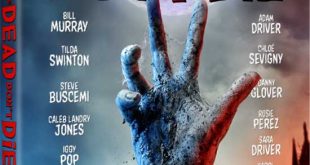Professional motorcycle racer Bud Clay heads from New Hampshire to California to race again. Along the way he meets various needy women who provide him with the cure to his own loneliness, but only a certain woman from his past will truly satisfy him.
REVIEW:
Technically and narratively “The Brown Bunny” is somewhat of an extremely poor film. Though like many films that produce controversial material, “The Brown Bunny”has gone onto a cult status for its racy scenes and documented sexual inclusions.
Produced as an art house film, the movie follows character Bud Clay (Vincent Gallo), a cycle racer over a cross country trek to the destination of a California race. All the while Bud is plagued by his memories of his former love interest Daisy (Chloë Sevigny). While in route he encounters 3 women, all of who he fails to make an emotional connection to due to his prior connection with Daisy.
He meets Violet (Anna Vareschi), Lilly (Cheryl Tiegs), and Rose (Elizabeth Blake). Each encounter is fleeting and brief. While stopping at a rest stop, Bud approaches the distressed Lilly, which instantly elevates into a sudden make-out session. The moment ends in tears and then Bud off on his way. This role for actress Cheryl Tiegs appears almost more as a “cameo” than as a main component presented in a quite bizarre fashion that seems way outside performances we have seen her in. It also is not a very flattering moment for this one-time super model.
The movie seems to serve to Gallo’s narcissistic relation with himself being nothing more than a self-serving pseudo biography. A biography with a few odd twists along the way. We “tend” to understand the character even though he grows incredibly tiring to watch which makes for an odd experience.
Chloë Sevigny received alot of press over this film of which she defends for it’s artistic merit. The extreme sexual display she exhibited resulted in her being dropped from her agency, William Morris. It was reported that the display of onscreen p*rnography was extremely detrimental to her career even though at the time she reported having a relationship with the director himself. Since its controversy Sevigny has found recovery by avoiding such explicit roles of which she admits to regretting in the past.
“The Brown Bunny” while slow, lethargic and self obsessed, alludes to one final break thru moment.. the performing of live un-edited fellatio upon Vincent Gallo by actress Chloë Sevigny .While this act should not identify the film over any standard p*rn event performed on camera, its claim to its throne is the presentation of a “supposed “legitimate” film that ends on a highly sexual graphic note. It has gone on world wide since debut to be known as the infamous “blow job” scene. It’s worthy to note that no props were used for this scene unlike other relative moments in film.
The film actually serves a purpose in its final reveal that brings a culty ending to the whole mess. You have to wonder why you needed to sit thru most of this to get to the point made. However when you lump it into a art-house classification it seems to gel a bit better.
The film was received poorly and banned by critics for its extreme sexual inclusion. It also received attention for being cited as one of the “worst films ever made”.It was later re-edited by Gallo which was said to had tightened the storyline,. Though I will have to say that even in its tightened form it’s damn lethargically-paced playing more to a crawl than a bang. The film was cut down from its 118 minutes leaving out 26 unneeded minutes for re debut.Original harsh critic Ebert saluted the film upon seeing its new edit which change the tone a bit deeming it as a “sad but effective”.
“The Brown Bunny” is by far not actor / director Vincent Gallo’s best work, though it is a unique piece of work that finds it fitting nicely into a cult film category in presentation and controversy. It is recommended for obvious reasons to adults but does has some merit for its rejection of traditional film style opting for a more personal journey that will leave you scratching you head. I believe “The Brown bunny” is so simple that it almost requires its viewers to react for “lack of” content while carrying it up to its final act purpose. As a product, I would not call it extreme, while it does contain a few extreme moments. It might quite be the most interesting boring film I’ve ever had to sit thru. Because of this, it has a special place for cult viewers.
The Brown Bunny (2003)
 Horror News | HNN Official Site | Horror Movies,Trailers, Reviews
Horror News | HNN Official Site | Horror Movies,Trailers, Reviews












